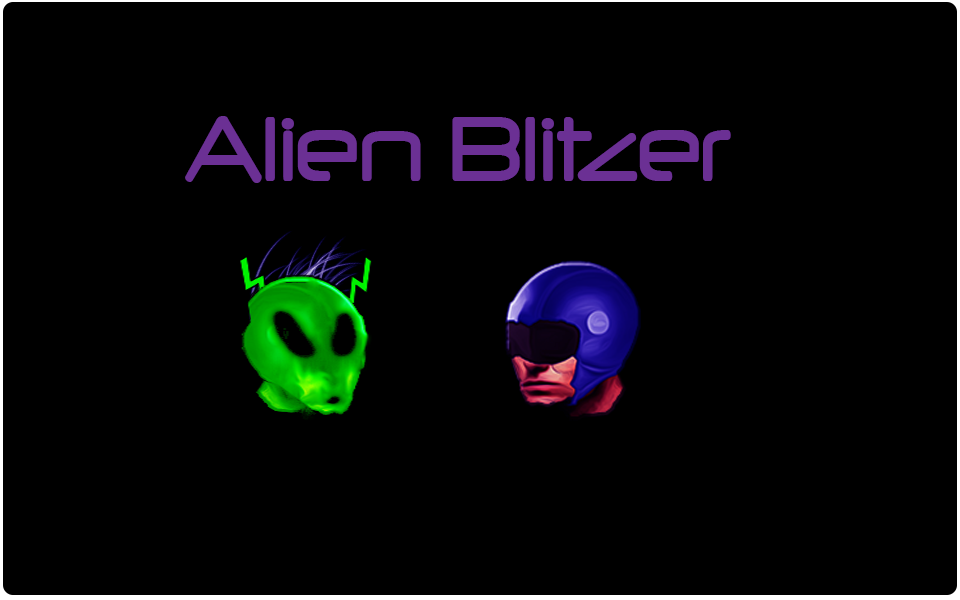
It’s the year 2600, and you have embarked on a voyage to find new alien artifacts in order to advance your civilization. The only problem is, the planet you are excavating on is still inhabited, and its natives aren’t too happy that you’re trying to take their stuff!
This is the premise of Alien Blitzer, the product of an afternoon of game jamming. It was built from concept to prototype in a 6 hour period with the theme of “Evolution”. In this post I just want to explore the game itself, and influences. I will be going over takeaways separately.
The Game
Here’s a slightly cleaned up version of the game. This is what we finished up with, with the exception of bugs, a couple minor visual things, and the intro screen. While incomplete, it was a nice prototype for the given time with two people . I coded the game in ActionScript while Josh Flash created the HUD and sprite graphics. I’ve included the demo and source below, although I warn, the source isn’t pretty.
Mechanics
Core mechanics are pretty simple, you have your arrow key movement (up, down, left right), and projectile attack. Ammo is expendable, so the player must collect ammo as they make their way through the stage. And there are also aliens the player must dodge or destroy.
One of the inspirations was the old NES title Legendary Wings. It looks as though I borrowed a few ideas, although not necessarily intentional. These include player controls, enemies, and weapon power ups. It may not look as much in the prototype, but that’s where things were going. The weapon system is intended to share the same weapon “evolution”, giving the player a more powerful weapon as they collect items. In addition, the baddies are intended to have a more elaborate movement, opposed to the straight lines.
Getting Technical
Alien Blitzer is built using Flixel, and a small set of other tools. Here’s a quick break out of what was used.
Controls – Player movement and attacking is handled by Flixel Power Tools’ FlxControl. For prototyping, this library makes things super simple as long as you’re looking for basic controls.
Tile Mapping – The tile map was put together with Dame Editor, and is made up of a few layers for the ground map, water, and mobs. The mobs needed some extra processing with ActionScript so they weren’t all part of one entity, and are activated by distance from the player. I was looking for something built into Flixel or Flixel Power Tools to more eloquently detect and trigger an event for when the object was on screen, but wasn’t able to locate anything in time.
Hud & Sprites – Graphics were created in Photoshop. They snapped in really nicely, replacing a bunch of ugly colored blocks that acted as placeholders.
Intro Screen – The intro screen uses Flixel Power Tools’ special FX, and Greensock’s TweenMax for the animation loop.
Future Tasks
I’ll be using what I learned from this game towards future games, including an upcoming prototype. Here are some points of focus in the near future:
Polish – The player controls and mob speed really needs to be tweaked so that thought can be put behind shooting the baddies. Maybe even some reworking of sprite proportions. As it is now, by the time a mob comes into view, you don’t have enough time to move into position to kill it. The level itself also need to be extended, it’s pretty short.
Sprite Management – I’m playing around with managing mob sprites in Dame so that there is little need for extra coding. This will make the polishing mentioned above much easier. Dame gives the option of creating several ActionScript classes that cover the tilemap/level, sprites, and interaction between these objects and the rest of the game. I intend on playing with paths and “trigger” tiles, which can effectively guide or alter sprite behavior, but I’m not sure if I can fit those into this game.
Music – Adding music has been a struggle. At first I was running into bitrate issues, but now it fails silently. I’ll want to add sound effects, and soundtracks in the future. Overcome I must.
Conclusion
There you have it. A review of my latest prototype. It has opened up a few more avenues to explore, which I’ll be writing up posts for as I go on.
I’m curious what technologies here others are using, or maybe want to learn. Input is welcome.